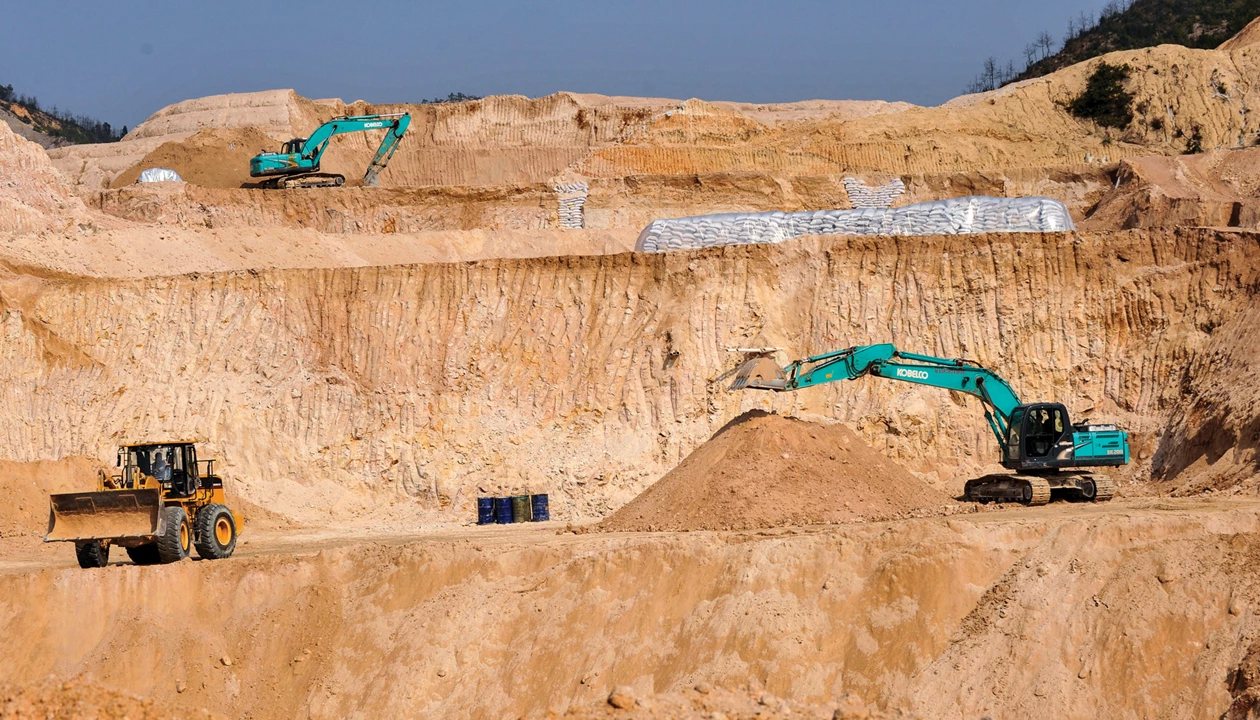Key Insights
- Funding is available from ARPA-E for magnet materials and rare earth element analysis.
- The application process starts now, and final selections come in January.
- The programs’ emphasis is on improving domestic supply chains for magnets and electronic materials.
The US Department of Energy is looking to fund research in the areas of rare earth element exploration and magnetic-material science. The department’s Advanced Research Projects Agency–Energy (ARPA-E) issued notices of funding opportunities today for two new programs, Reliable Ore Characterization with Keystone Sensing (ROCKS) and Magnetic Acceleration Generating New Innovations and Tactical Outcomes (MAGNITO).
Robert Mellors, ARPA-E program director for ROCKS, says that the funding opportunities are designed for academic researchers as well as start-ups and other for-profit companies to participate. Concept papers, which are about four pages long and contain a research proposal along with basic budget information, will be due in late September for both programs. ARPA-E staff will invite full applications from a selection of those papers, and final funding decisions should happen in January.
For ROCKS, “We would like somebody who does R&D but also would have a partner or close connections with the mining industry,” Mellors says. The program will deploy $40 million to develop sensors, analytical techniques, and drilling technologies that will make it faster and easier to find and vet US rare earth element deposits. The funding is for technology development, not for specific extraction sites.
Most rare earth deposits in North America are found in hard rocks such as granite, Mellors says, unlike the clay formations where the valuable minerals are found in China, for example. That means hundreds of boreholes and a decade or more of analysis are needed to even start a mine. “We’d like to speed up that process. Drill faster. Sense better,” he says, and get the time down to about 1–2 years.
Though a deep understanding of mining is important, Mellors says, “We would like to encourage people who are outside of the mining community now to bring in outside capabilities.” In addition to conventional deposits, he says, “We also want to be able to expand into new, untapped resources such as seafloor nodules.”
The $20 million MAGNITO program, meanwhile, aims generally to reinvigorate US research into the chemistry and materials science of magnets, says program director G. Jeffrey Snyder, and specifically to discover materials with magnetic saturation moments in excess of 2 to 2.5 T—twice as strong as the best permanent magnets we have today.
The scientific opportunity Snyder sees is in using modern computational tools and high-throughput experimental techniques to explore materials made by combining three, four, and five elements. “There might be thousands, hundreds of thousands, maybe even millions of magnetic structures out there, and we can filter through them better today than we could have in the past.”
“The goal here is to attract what we would have called a solid-state chemist to think about what chemical structures are correlated with strong magnets, to be creative, and to come up with entirely new structures that don’t exist that might also be strong magnets,” Synder says. Success in ARPA-E’s view could mean publication of high-impact journal articles that advance the field, he says, and it could mean disrupting the $30 billion-per-year permanent-magnet industry.
Rare earth elements and the high-strength magnets that use them have “transitioned from being mere chemical curiosities to becoming essential components in current technologies,” including medicine, defense, transportation, and the energy transition, says Cesar Ovalles, a retired energy industry chemist and the incoming chair of the Energy and Fuels Division of the American Chemical Society. ACS publishes C&EN. This kind of funding can have a big impact, he says, especially as federal support for clean energy research remains uncertain. “Finding new ways to characterize rare earth–bearing reservoirs is paramount, as is optimization in the use of these elements,” Ovalles says.
Chemical & Engineering News
ISSN 0009-2347
Copyright ©
2025 American Chemical Society
